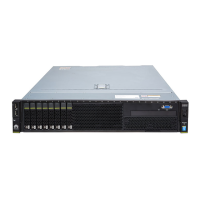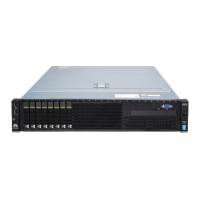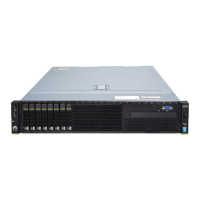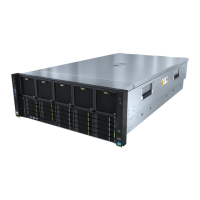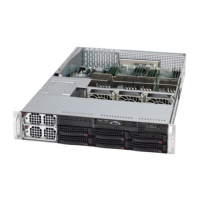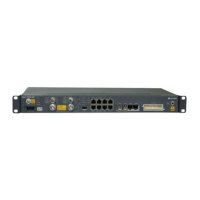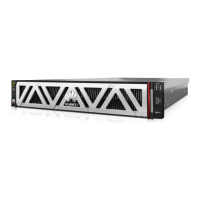2.6 Logical Structure
This topic describes the RH8100 V3 logical structure, including the logical
modules, QuickPath Interconnect (QPI) and PCIe topologies, and Huawei
FusionPar technology.
The RH8100 V3 logically consists of the following modules:
● System chassis module: This module consists of the backplane, indicator
board, fan modules, and chassis. As the basic component of the RH8100 V3,
this module houses and interconnects components, and provides power
supply and cooling channels for the system.
● Compute module (CM for short): As the core computing unit of the RH8100
V3, each compute module consists of one CPU board and two memory boards
to support one CPU and a maximum of 24 DIMMs respectively.
● Front I/O module: This module consists of hard disks, RAID controller cards,
and PCIe riser cards (available only for the FM-A). The front I/O module
supports four types of
congurations: FM-A, FM-B, FM-C, and FM-D. They
respectively apply to RH8100 V3 with 12 SAS HDDs, SATA HDDs, or SSDs, 24
SAS HDDs, SATA HDDs, or SSDs, 8 SAS HDDs, SATA HDDs, or SSDs, and 8 SAS
HDDs, SATA HDDs, SSDs, or NVMe PCIe SSDs.
● Rear I/O module: This module provides 10 standard full-height PCIe slots at
the rear, including four hot-swappable ones.
● High-performance Fusion Console (HFC) module: The RH8100 V3 requires
two HFC modules to work together. As the core control unit of the RH8100
V3, the HFC modules implement power control and system
conguration and
management, and provide exible LAN on motherboard (LOM) options.
● Power supply unit (PSU): supplies power to the server.
● Fan module: dissipates heat for the server.
Topologies of QPI, PCIe, and Other Ports
Figure 2-29 and Figure 2-30 show the logical architectures of the RH8100 V3. (In
Figure 2-30, the left part shows the topology of two memory boards, each with
12 DDR3 or DDR4 DIMMs, and the right one shows the topology of two memory
boards, each with eight DDR3 or DDR4 DIMMs.) Figure 2-31 and Figure 2-32
show the PCIe topology.
Figure 2-33 and Figure 2-34 show the topology of other ports, such as USB, DVD,
and LCD.
The key terms in these
gures are dened as follows:
● QPI: QuickPath Interconnect developed by Intel, used to interconnect and
transmit data between CPUs. The
RH8100 V3 supports three types of CPUs: Intel
®
Xeon
®
E7-8800 v2, E7-8800
v3, and E7-8800 v4. These CPUs support
dierent maximum QPI transmission
rates:
– E7-8800 v2: The maximum QPI transmission rate is 8 GT/s, and the two-
way transmission bandwidth of a single QPI port is 20 GB/s.
RH8100 V3 Server
User Guide 2 About the RH8100 V3
Issue 30 (2019-12-19) Copyright © Huawei Technologies Co., Ltd. 64
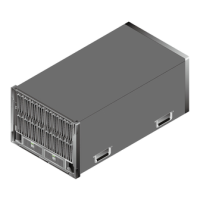
